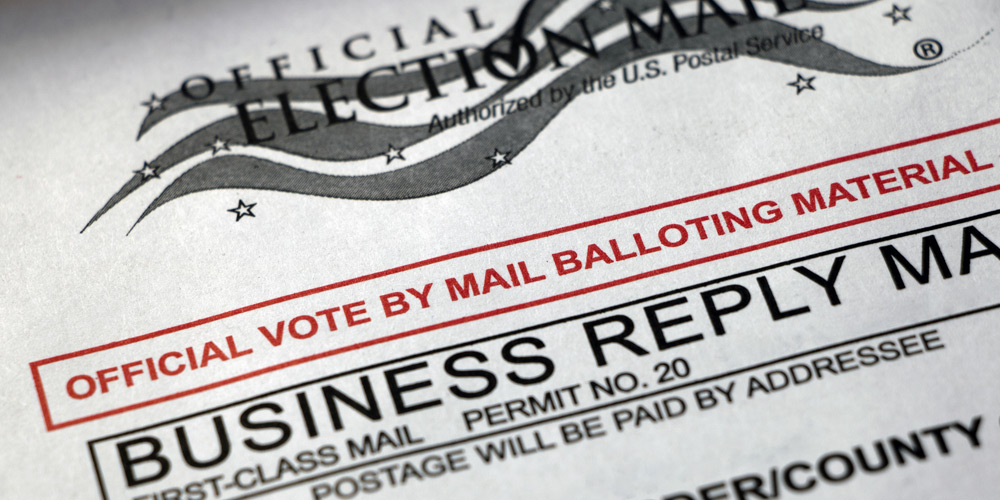Companies should make it their business to get out the vote
Facilitating voting supports customers and employees, both of whom increasingly expect businesses to make the world a better place.
Voters across the United States are casting ballots in what’s likely to be the most expensive election in the country’s history, projected by the Center for Responsive Politics to cost US$10.8 billion. But despite record-breaking spending by the campaigns and the possibility of a once-in-a-century surge in turnout, voter participation in the U.S. is comparatively underwhelming. Only 55.7 percent of eligible voters participated in the last presidential election, below recent voter turnouts in other countries (for example, 66 percent in Mexico, 76 percent in Israel, and 87 percent in Belgium). That means about 100 million U.S. citizens did not exercise their fundamental right to vote four years ago.
Political parties and civic action groups are working hard to increase voter turnout this time around. But they’re not the only ones. Joining forces with them to help get out the vote is a new entity: corporate America.
Hundreds of leading companies from a variety of industries have pledged to give workers time off to vote, dozens have become corporate partners in efforts to recruit poll workers, and others are offering their buildings as polling places or allocating time for employees to do voter outreach in their communities.
These efforts are not just good for democracy; they’re good for business. A recent Harvard Kennedy School case studyPDF found that even small-budget company programs to increase voter participation can strengthen relationships with employees and customers, and elevate the company’s reputation with elected officials. With the moments left before Election Day ticking down, here are some additional, timely reasons to get involved.
Get-out-the-vote efforts are not just good for democracy; they’re good for business.
Voting is a public health issue this year, and public health is now the responsibility of all businesses. COVID-19 has forced companies to focus on the safety of their employees, often in unprecedented ways. Many businesses have expanded health and flextime benefits and implemented new practices to keep the wheels turning — safely. They should now extend this approach to help people avoid the risk of infection while voting. Civic Alliance, a coalition of almost 450 companies, is working to identify and train thousands of new poll workers to offset expected shortages. (Poll volunteers are typically older and may be at higher risk for becoming seriously ill if they contract COVID-19.) There are many other ways companies can contribute to the creation of safe voting conditions, including donating personal protective equipment for poll workers and creating additional spaces to vote. Some NBA teams and the entertainment company Live Nation, for example, are turning sports arenas and concert venues into polling places for employees and fans.
Supporting voting is a way to advance diversity, equity, and inclusion. Talking about diversity, equity, and inclusion is not sufficient to address systemic racism. Employees and customers are watching to see what actions companies take. Working to overcome disparities in voting is one way to act. Black Americans are more than twice as likely as whites to find the voting process difficult, according to Pew Research Center. Starbucks recently announced initiatives it’s launching to improve voting access and protections for people of color, who, according to a survey by the Public Religion Research Institute, often struggle more than other voters with structural obstacles to voting, such as complicated voter-registration processes and not being able to leave work to go to the polls. More companies should offer time off to vote, at a minimum, and should also provide information and resources to help employees and customers navigate all their options, including voting by mail and early voting.
Investment in voter turnout is likely to produce results. Leading companies that have made commitments to advancing stakeholder capitalism (the notion that they operate for the benefit of all stakeholders and not just shareholders) must show real, measurable results. Corporate engagement, along with other efforts to increase voting, can move the needle. Voter turnout — including turnout among minorities — surpassed 50 percent in the 2018 midterm elections, a level of participation last reached for a midterm in 1982. And although this increase can’t be linked solely to business’s efforts, the cumulative effect of more than 100 companies throwing their weight behind get-out-the-vote programs certainly contributed to the higher turnout. Now, companies such as Levi Strauss and Patagonia are redoubling their efforts for the 2020 election.
Politics can be polarizing, but support for voting is bipartisan and noncontroversial. And by increasing voter turnout, businesses can help restore the electorate’s confidence in the health of their democracy and the integrity of the U.S. election. In the process, companies will enhance their brand, reduce employees’ anxiety, and demonstrate their shared purpose with society.






